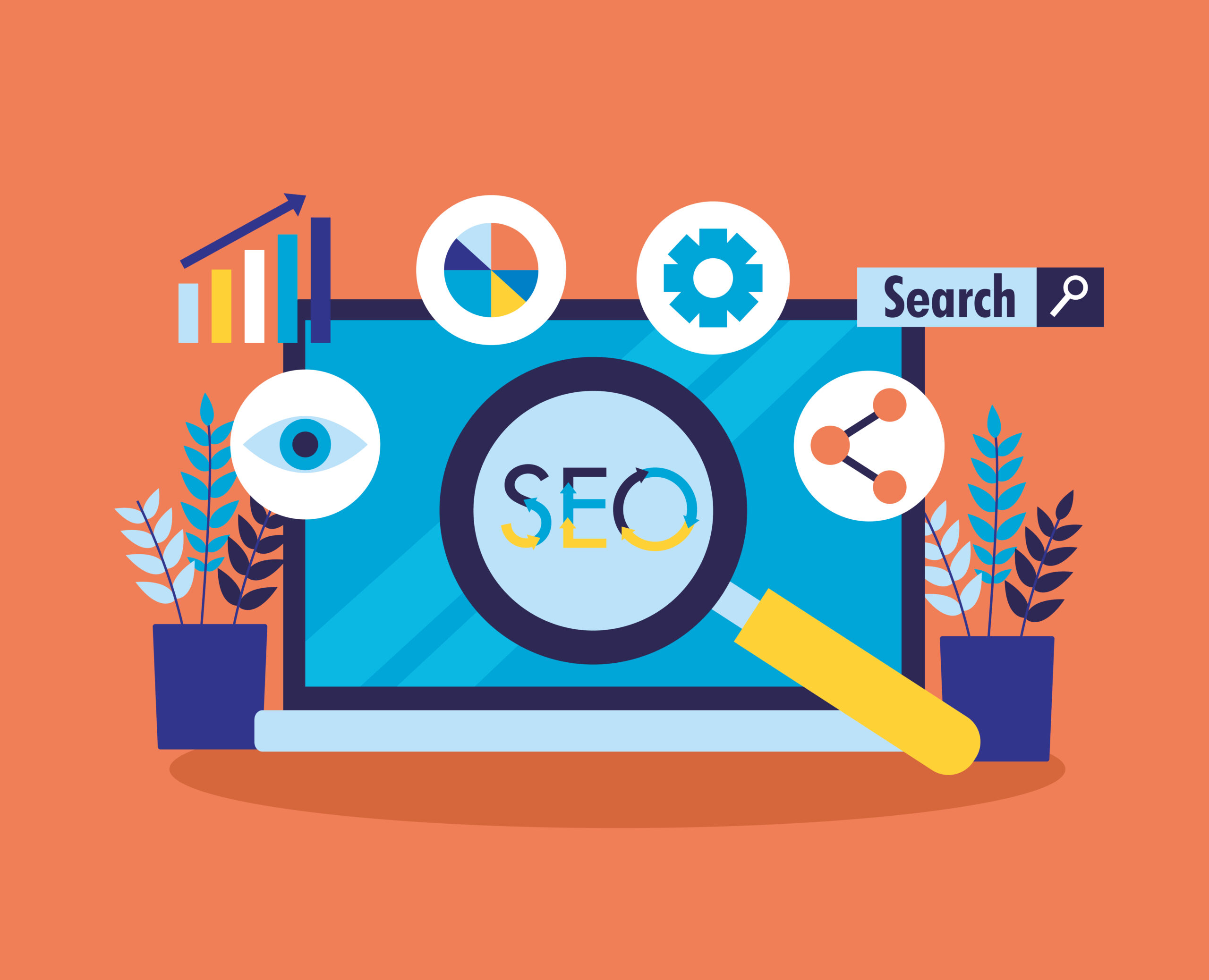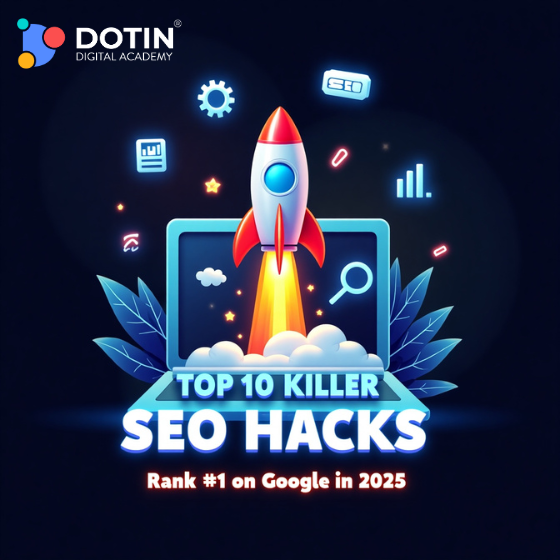Introduction
On-page search engine optimization is more important than ever in 2025. Optimizing the on-page elements on your website offers better ranking and user engagement in the context of AI-driven search and change algorithms. Search engine optimization (SEO) is always changing, yet one aspect remains the same—the need for good on-page SEO activities. As of 2025, Google’s algorithm is smarter than ever and focuses on relevance, user experience, and quality. If you wish for your website to rise higher in the search results, you need to concentrate on optimizing what you have direct control of: your own website
In this blog, we will look at the Top 10 On-Page SEO Tasks that can enhance your Google rankings in 2025. Whether you’re just starting out or have been doing digital marketing for years, these tips are useful, doable, and in line with the newest SEO trends. With the kind of AI, semantic search, and more intelligent algorithms now available, some marketers may believe that on-page SEO is less necessary. That’s not close to true. Google still places enormous reliance on signals from your own site itself—structure, clarity, relevance, and user activity—to decide rankings.

Actually, on-page activities are playing an even larger part now. Why? Because Google wants to reward content that provides actual value and outstanding user experience. Your ability to present, organize, and maximize your content is what will make you be seen on page one or lost forever. On-page SEO activities.
Let’s examine each element of on-page closer, and how you can become a master at them in 2025
Improve Meta Descriptions and Title Tags Relevant
Generate original title tags and meta descriptions that are packed with keywords. They need to convince users to click and provide a precise summary of your content. The title tag tends to be the first thing search engines and users see. A good title will describe the content clearly, contain your main keyword, and generate clicks. In 2025, there is more intent to be understood by search engines, so make your title the same as what people are looking for in on-page SEO activities.
Making Strategic Applications to Header Tags
Make use of the H1, H2, and H3 tags to organize all of your data. The structure enhances readability, as it helps search engines in analyzing the flow of data you provide. Correct header hierarchy assists both search engines and users in understanding your structure. Utilize one H1 for your primary title, and separate your content into sections of logic with H2s and H3s.
Why it matters: Search engines read headers to determine topic hierarchy and content depth in on-page SEO activities.
Having your keyword within at least one or two of your headers (such as “Top On-Page Activities”) is reinforcing topical relevance.
Enhance URL Structure
Target keywords should be contained in brief, relevant URLs. Steer clear of unnecessary parameters, and make sure they accurately represent the content located on the page in on-page SEO activities.
Putting Internal Linking into Reality
Using internal linking to connect appropriate areas on your website. This expands page authority, improves site navigation, and keeps user involvement in on-page SEO activities.
Enhance Pictures
Use meaningful file names, include alt text with appropriate keywords to improve accessibility and SEO, and compress pictures for speedy loading.
Images do more than make your website appealing. They can improve your rankings when properly optimized.
- Insert alt text with keywords
- Compress images to decrease file size
- Use new formats such as WebP
Images also assist with Google Image Search, providing another path for traffic in on-page SEO activities.
Make Utilization of Schema Markup
To make your material easier for search engines to interpret and provide rich snippets in search results, include structured data on your pages.
Boost the speed at which pages load
Google uses page speed as a ranking factor. Users get bored and bounce rates rise when pages load poorly. Using GTmetrix or Google PageSpeed Insights to test and boost your website in on-page SEO activities.
Ways to improve speed:
- Compress images
- Minimize JavaScript and CSS
- Made use of a content distribution network (CDN)
- Enable browser caching
- Fast websites create better user experiences, a big plus for on-page SEO activities.
Develop Outstanding, User-Centric Content
All successful on-page actions center around excellent content. Google desires to deliver users the most applicable and useful responses. That implies that your content must be:
- Original and informative
- Good in structure
- Fluff-free
- Updated on a regular basis
- Backed up by authoritative sources
Tip bonus: Respond to associated questions (People Also Ask) and use tools such as Answer ThePublic to identify what users are interested in.
Align On-Page SEO with Search Intent
Search intent is the why behind a query—is the user trying to learn something (informational), purchase something (transactional), or compare choices (navigational)?
Google in 2025 is more accurate than ever before in knowing this. That means your content—and your on-page endeavors—must all be aligned with the intent behind keywords.
Example: If a user queries “best running shoes 2025,” an article of comparison or review is optimum over an ordinary blog post.
Action Tips:
- Using “People Also Ask” on Google to identify questions that are intent-driven.
- Arrange keywords based on their intended use, then adjust text structures effectively.
- Avoid misleading users with fake titles or off-topic content.
Give Content Depth More Weight Than Length
More frequent material will rank higher, but only if it is deep and valuable. Google prefers pages that are fully answering the searcher’s question and giving related value.
Rather than simply attempting to meet a word count, enrich your blog or page with:
- Case studies
- Examples
- Pros and cons
- FAQs
- Definitions or glossaries
- Related tools or resources
These additions enrich the user’s experience, drive time on site, and provide more opportunity to naturally incorporate your keyword “on-page SEO activities.”
Bonus: Additional content sections equal additional opportunities to appear in featured snippets.
Improve Readability and Scannability
Users who want to consume content want to do so in a way that is easy and quickly scannable.
It’s 2025, and most of your users are skimming your content before deciding to stick around or bounce. How your text is laid out for readability, and what keyword you’re going to use in that piece of text, is really important on your page.
Tips to improve scannability:
- Add bullets and numbered lists
- Insert key phrases into the article content and bold them up!
- Use white space generously
- Include a table of contents (particularly for long articles)
Readability makes people stay longer, decreases bounce rates, and makes people read more pages on your website. On-page SEO activities.
Leverage Topic Clusters and Semantic SEO
Modern SEO is no longer one page, one keyword. It’s about topical authority—going into a subject in depth over multiple related pages and linking them well.
A topic cluster model comprises
- A pillar page (long-form content targeting a big keyword such as “on-page seo activities”) TextFormFieldSen
- Clusters of cluster pages (focused posts addressing similar subtopics, such as meta tag optimization, internal linking best practices, and on-page SEO Activities for images)
- Internal linking that binds them collectively
This lets Google know your website is an expert on the subject matter and should rank better overall.
Update and Revitalise Old Content
Search engines look for freshness. If you have older posts on things like on-page factors, don’t let them die off. New, updated, or performed content can resurrect rankings.
Fresher sites are considered more authoritative.
Update strategy:
- Repair out-of-date stats or links
- Include new sections for 2025 tools and data
- Improve internal linking
- Replace or refresh images and media
- Re-submit to Google Search Console
Google values sites that remain relevant over time in on-page SEO activities.
Conclusion

SEO trends may come and go, but on-page tactics are still the cornerstone of good digital visibility. From headline formulas to the use of structured data, every piece of the puzzle is about telling Google your content deserves to be at the top.
With that being said, let me reintroduce you to the top 10 on-page SEO activity factors you need to concentrate on going forward in 2025:
- Title tag optimization
- Meta description enhancement
- Header structure
- Smart keyword placement
- Fast page speed
- Mobile-first design
- Internal linking
- Image optimization
- High-quality content
- Schema markup
Integrating these in your SEO plan might just give you that competitive advantage and prop you up in the search engine rankings.

